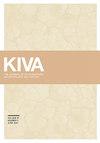Indigenous Disk Beads in the Southern Southwest: Contemporary, Ethnographic, Ethnohistorical, and Archaeological Evidence
IF 0.4
0 ARCHAEOLOGY
Kiva-Journal of Southwestern Anthropology and History
Pub Date : 2020-07-03
DOI:10.1080/00231940.2020.1775425
引用次数: 1
Abstract
Within the Phoenix Basin in southern Arizona, disk beads have long been highly valued. Remarkably, the Akimel O’Odham (i.e., Pima) and Pee Posh (i.e., Maricopa) still place great importance on them today. Similar beads were formed from shell, stone, and clay. The effort necessary to manufacture beads from these constituents varies, but beads made from different materials are often macroscopically indistinguishable. Furthermore, some raw materials had to be imported, while other constituents were locally available. These factors should have affected the value of different bead types, and ethnographic evidence shows that indigenous people have clearly defined preferences for attributes, including color and material. In particular, beads made from shell and turquoise are recognized as being most valuable. This paper presents archaeological, ethnohistorical, ethnographic, and contemporary data that show that small disk beads were a form of wealth that was employed in trade transactions.西南部的土著盘珠:当代、民族志、民族历史和考古证据
在亚利桑那州南部的菲尼克斯盆地,圆盘珠长期以来一直备受重视。值得注意的是,阿基梅尔·奥德姆(即皮马)和皮·波什(即马里科帕)今天仍然非常重视他们。类似的珠子是由贝壳、石头和粘土制成的。用这些成分制造珠子所需的努力各不相同,但用不同材料制成的珠子在宏观上往往无法区分。此外,一些原材料必须进口,而其他成分则可以在当地获得。这些因素应该影响了不同珠子类型的价值,民族志证据表明,土著人对属性(包括颜色和材料)有明确的偏好。特别是贝壳和绿松石制成的珠子被认为是最有价值的。本文介绍了考古、民族历史、民族志和当代数据,这些数据表明小圆盘珠是贸易交易中使用的一种财富形式。
本文章由计算机程序翻译,如有差异,请以英文原文为准。
求助全文
约1分钟内获得全文
求助全文
来源期刊
CiteScore
0.70
自引率
33.30%
发文量
31

 求助内容:
求助内容: 应助结果提醒方式:
应助结果提醒方式:


